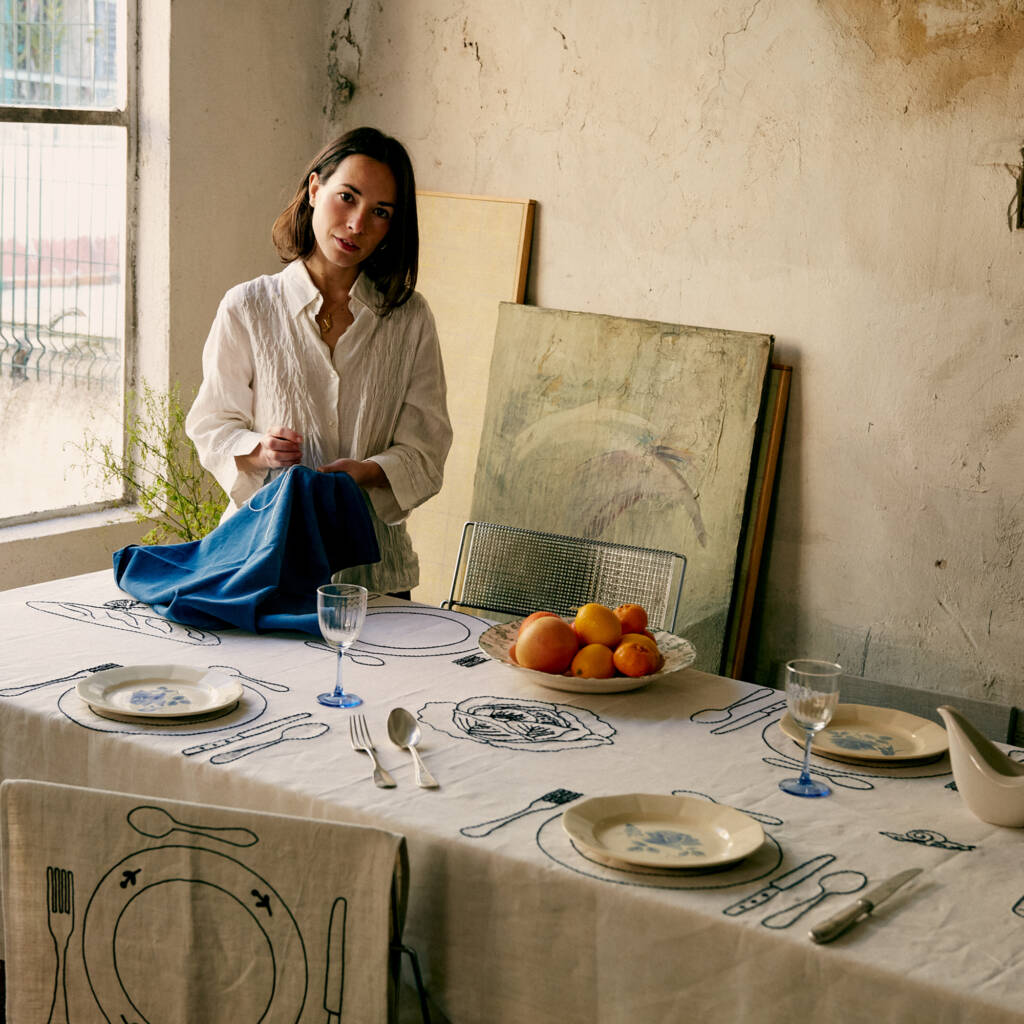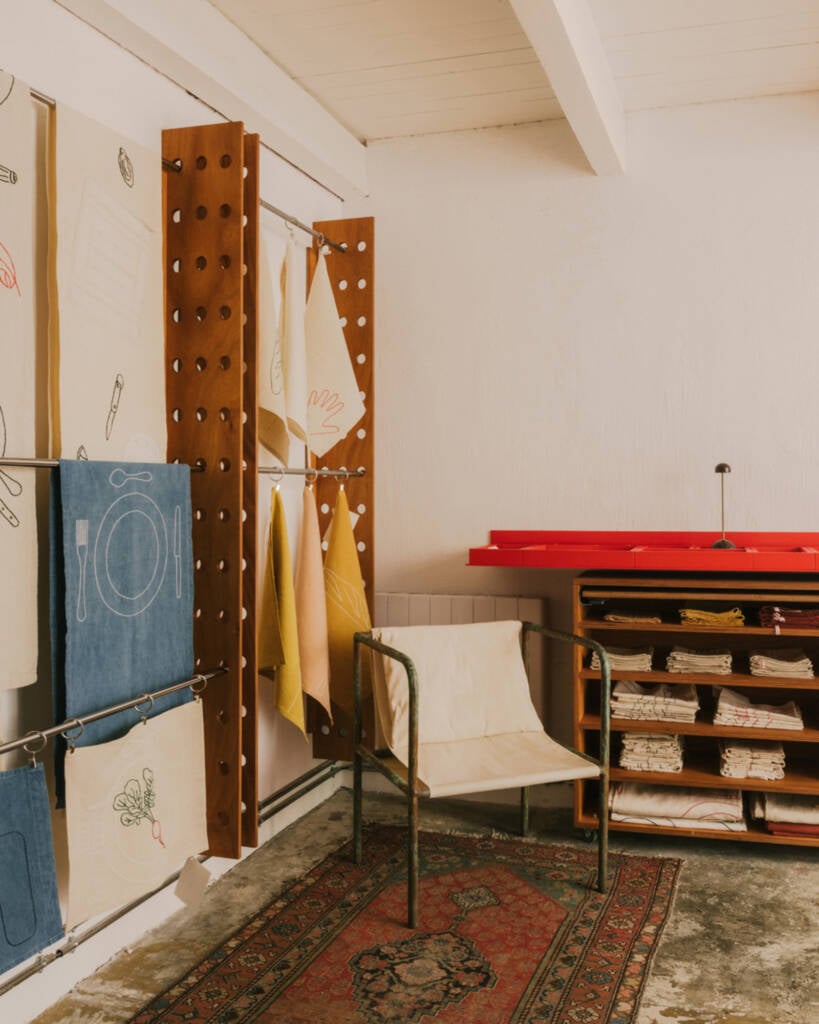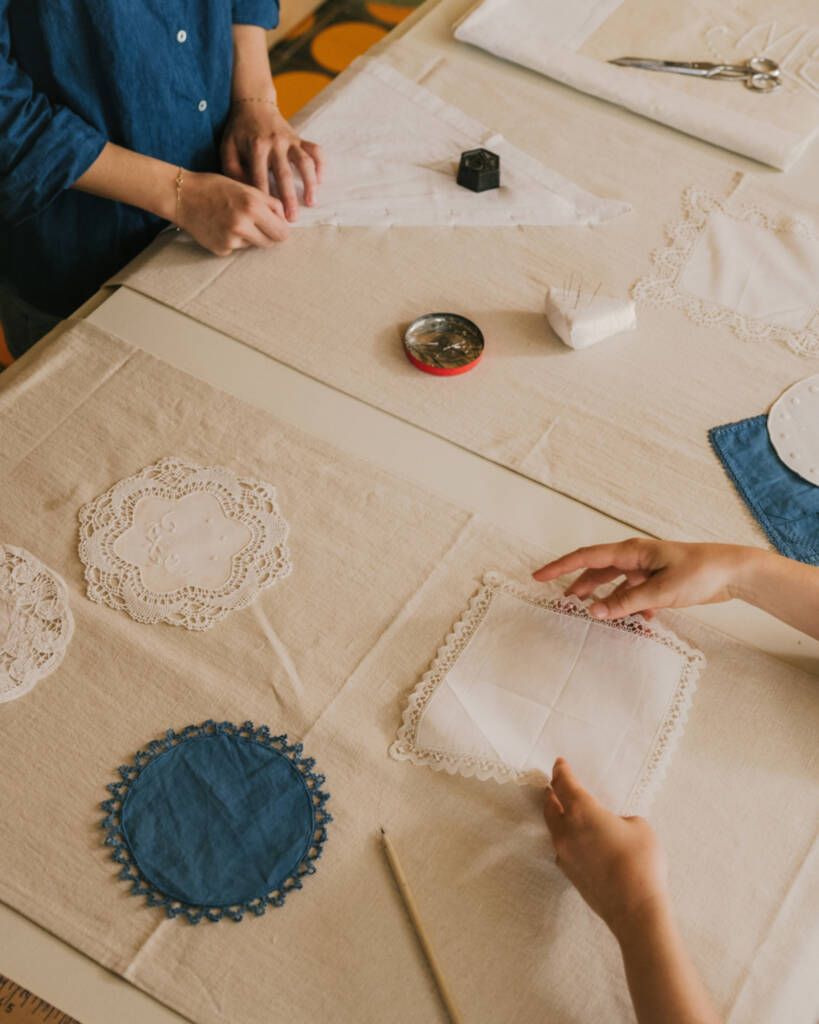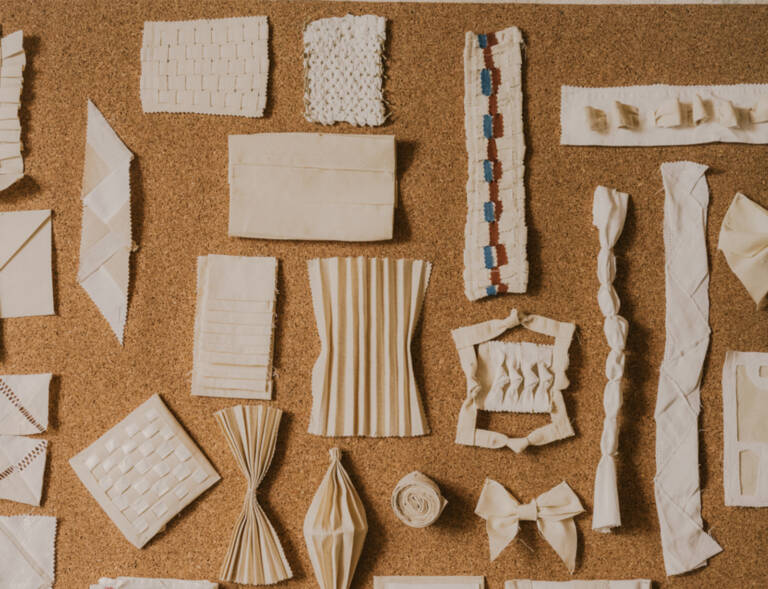


In an era dominated by mass production, French artist-designer Sarah Espeute breathes new life into the age-old craft of embroidery with her brand, Œuvres Sensibles. Operating from her Marseille studio, she transforms vintage textiles into minimalist yet evocative pieces that blend tradition with modernity. Through her self-taught techniques, Espeute invites us to pause and find beauty in the everyday moments her creations encapsulate.
hube: Your work blends tradition with modernity in a way that feels both timeless and revolutionary. What inspired you to take embroidery, a centuries-old craft, and reimagine it in such contemporary ways?
Sarah Espeute: There are several reasons behind this choice. The first was economical: when I wanted to create design objects on my own, textiles and embroidery naturally stood out because they’re so accessible. All you need is thread and a needle to get started!
The second reason is that this technique feels very familiar to me. I learned it as a child, and it has become instinctive, almost natural, as a means of expression. Since I didn’t receive professional training in embroidery, I approached it in a self-taught and unconventional way. I used thicker thread and a larger needle, with the idea of turning embroidery into a tool similar to a paintbrush to draw lines as one would in painting.
Finally, I am a patient person, but only to a certain extent! Creating clean, minimalist lines is also a way to simplify the process and work faster while staying true to my aesthetic.
h: You describe your brand, Œuvres Sensibles, as creating ‘emotional resonance’ through textiles. How do you infuse emotions into something as tactile as fabric?
SE: Interior textiles are a true field of exploration precisely because they are often overlooked. In the past, textiles were made of precious and costly fabrics, symbols of wealth and craftsmanship. Today, with the rise of fast fashion and large-scale industries, they have become inexpensive, lower in quality, and largely devalued.
That’s where the challenge lies: bringing value back to this material by working with vintage textiles or locally sourced fabrics. Through embroidery and handcrafted work, I give these pieces an added soul and a sense of nostalgia. Embroidery often evokes universal memories – almost everyone has a grandmother or mother who used to do it. It takes us back to childhood moments filled with warmth and tenderness.
But with my creations, I don’t just evoke memories; I also create new ones. Through my trompe-l’œil designs, particularly my imaginary meals, my pieces tell convivial and heartwarming stories. These stories are easy for anyone to connect with and make their own.
My ambition is also to inspire a new way of consuming. By fostering an emotional connection to my creations, I hope people will choose to keep them for a long time, nourish them, and even pass them down rather than falling into the endless cycle of buying and discarding.
h: The trompe-l’œil embroidery in your designs plays with perception and reality. What drew you to this visual illusion, and what stories are you hoping to tell through it?
SE: What fascinates me about trompe-l’œil is its ability to create a poetic illusion – one that intrigues and brings a smile. I adore the concept of ‘positive’ design, something that plays with perception to provide a touch of happiness and escapism while inspiring dreams.
My goal is to tell beautiful stories – simple, accessible ones rooted in the moments of everyday life that we all share. I believe my empathetic nature and sense of nostalgia deeply influence my work. I like to put myself in others’ shoes to understand what they feel, and I take joy in revisiting happy memories. Naturally, these are the emotions I try to convey through my creations, as they speak to everyone and tap into the universality of human feelings.

